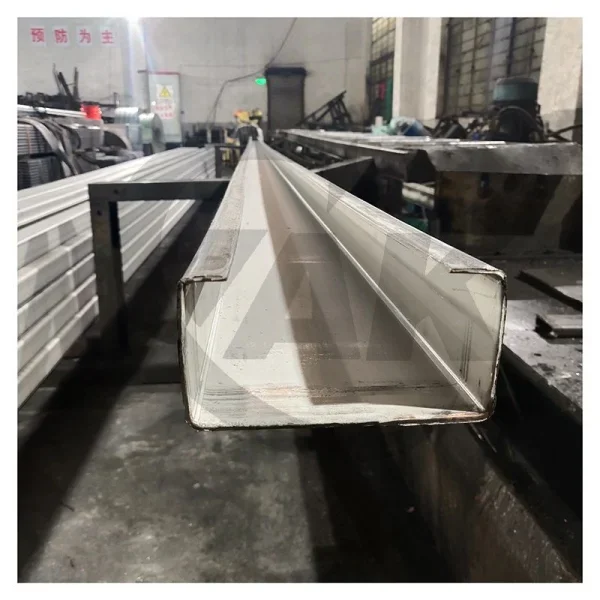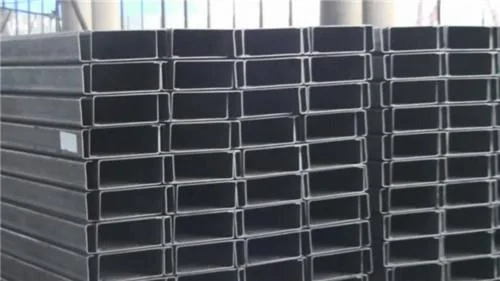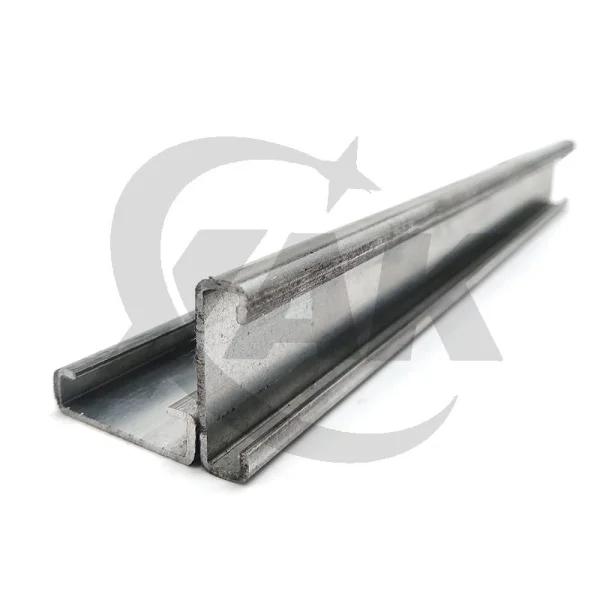Are you curious about the meticulous process that goes into ensuring top-notch quality for cold-rolled C steel profiles? Look no further because we've got you covered! In this article, we'll be diving deep into the world of quality inspection and taking a closer look at every step of the process. From testing for dimensional accuracy to analyzing surface finish, join us as we explore how manufacturers ensure their products meet the highest standards of excellence. So, let's roll up our sleeves and get ready to examine the fascinating process behind inspecting cold-rolled C steel profiles!
Introduction to Cold Rolled C Steel Profiles Quality Check
Today, we'll be taking a closer look at the process of quality inspection for cold rolled C steel profiles. This is an important process in the manufacturing of steel products, as it ensures that the finished product meets all the necessary quality standards.
There are a few different steps involved in the quality inspection process for cold rolled C steel profiles. First, the raw material must be inspected to ensure that it meets all the required specifications. Once the raw material has been approved, it is then sent to the production line where it undergoes a series of processes to shape it into a profile.
After the profile has been created, it is then passed through a series of quality control checks. These checks are designed to catch any potential problems with the finished product before it leaves the factory. Once the cold rolled C steel profile has passed all these checks, it is then ready for delivery to the customer.

Cold Rolled C Steel Profiles Quality Check Process
When it comes to quality inspection for cold rolled C steel profiles, there are a few key things to keep in mind. First, it's important to understand the different types of inspections that can be performed: visual, dimensional, and functional. Each type of inspection has its own set of benefits and drawbacks, so it's important to choose the right one for your needs.
Visual inspections are usually the first step in the quality inspection process. They can be used to identify potential problems with the product, but they can't always provide detailed information about the cause of the problem. Dimensional inspections are more precise than visual inspections and can be used to measure specific product dimensions. Functional inspections test how well the product functions and can identify potential problems that may not be apparent during visual or dimensional inspections.
Once you've selected the appropriate type of inspection for your needs, the next step is to select a qualified inspector. There are a variety of ways to find qualified inspectors, such as online directories or word-of-mouth recommendations. Once you've found a few potential inspectors, it's important to check their credentials and experience to make sure they're qualified to perform the type of inspection you need.
Once you've selected a qualified inspector, they will visit your facility and perform the inspection according to your specifications. After the inspection is complete, they will provide you with a report detailing their findings. This report will include information on any problems that were found and what steps should be taken to correct them.
Quality inspections can help ensure that your products are safe and meet all applicable standards. They can also provide valuable insight into the manufacturing process, allowing you to identify potential issues before they become major problems. By choosing the right type of inspection and selecting a qualified inspector, you can ensure that your products are of the highest quality.
Types of Quality Tests Performed on Cold Rolled C Steel Profiles
When it comes to quality testing of cold rolled C steel profiles, there are a few different types of tests that are typically performed. These tests can help to ensure that the final product meets all of the necessary requirements and specifications. Here is a look at some of the most common quality tests that are performed on cold rolled C steel profiles:
Visual Inspection: This is one of the most basic types of quality tests that can be performed on any type of material. A visual inspection simply involves taking a close look at the material in question to look for any defects or irregularities. With cold rolled C steel profiles, a visual inspection can help to identify any issues with the surface finish or overall dimensions of the profile.
Dimensional Measurement: In order to ensure that cold rolled C steel profiles meet all dimensional specifications, it is necessary to perform dimensional measurements. This can be done using a variety of different tools and methods, such as calipers, micrometers, and coordinate measuring machines (CMMs). By taking accurate measurements of the various dimensions of the profile, it is possible to identify any areas that do not meet the required specifications.
Surface Finish Testing: The surface finish of cold rolled C steel profiles is an important aspect that must meet certain requirements. There are a variety of different surface finish tests that can be performed in order to assess the quality of the finish, such as roughness measurement, hardness testing, and microstructure analysis. By conducting these tests, it is possible to ensure that the finished product meets all of the necessary requirements.
Chemical Analysis: This type of quality testing consists of analyzing the chemical composition of cold rolled C steel profiles in order to ensure that it meets all of the necessary specifications. This can be done using various methods, such as spectrometry, emission spectroscopy, and atomic absorption spectroscopy. By doing this, it is possible to look for any potential impurities or deviations from the required chemical composition.
Magnetic Particle Testing: This type of quality testing involves passing a magnetic field over the cold rolled C steel profile in order to identify any surface irregularities or defects. While this method is not as common as other types of quality tests, it can be useful for detecting issues that would otherwise be difficult to identify through visual inspection alone.

The Process of Quality Inspection for Cold Rolled C Steel Profiles
The process of quality inspection for cold rolled C steel profiles begins with the receipt of the material from the supplier. The material is then visually inspected for any surface defects. The dimensions of the material are then checked against the requirements specified by the customer. If there are any dimensions that do not meet the requirements, the material is rejected.
After the visual inspection, the material is then put through a series of tests to check its mechanical properties. These tests include hardness testing, tensile testing, and impact testing. If the results of these tests do not meet the requirements specified by the customer, the material is again rejected.
Once the material has passed all of the required tests, it is then ready for shipment to the customer.
In addition to these tests, the manufacturer may also perform additional inspection and testing depending on the customer' s requirements. This could include magnetic particle inspection, ultrasonic testing, eddy current testing, radiography, and other non-destructive testing techniques. All of these tests are performed to ensure that the material meets all of the customer' s requirements before it is shipped.
Benefits of Quality Control and Inspections in the Steel Industry
There are many benefits that come with quality control and inspections in the steel industry. Perhaps most importantly, these practices help to ensure that the final product meets all the necessary safety and performance requirements. In addition, they can also help to identify potential issues early on in the production process, which can save both time and money.
Of course, quality control and inspections are not just about catching problems. They can also be used to verify that the manufacturing process is running smoothly and as intended. This information can then be used to make necessary adjustments to improve efficiency or address other concerns. Ultimately, quality control and inspection play a vital role in ensuring that the steel industry runs smoothly and efficiently.
Challenges in the Quality Control Process
One of the most important aspects of quality control is ensuring that products meet customer specifications. With cold rolled C steel profiles, this can be a challenge due to the wide range of possible applications for the metal. In order to ensure that each profile meets customer expectations, a number of quality control measures must be put in place.
First, all incoming raw material must be inspected for quality and grade. This includes checking for any damage that may have occurred during transport, as well as verifying that the material meets the standards set by the customer. Once material has been deemed acceptable, it is then cut to size and shaped according to the customer's specification.
After the profile has been formed, it undergoes a series of tests to check for dimensional accuracy and surface finish. These tests help to ensure that the final product will meet the customer's requirements. The profiles are packaged and shipped to the customer's site for installation.
By following these steps, we can ensure that our cold rolled C steel profiles meet the highest standards of quality and performance.

Conclusion
Quality inspection for cold rolled C steel profiles is a complex and multi-faceted process. It requires careful consideration of various factors such as the material's chemical composition, its mechanical properties, its surface finish, and dimensional accuracy. With proper quality control procedures in place, manufacturers can ensure that their products meet customer specifications and industry standards. By following these guidelines, companies can guarantee that they are producing high-quality steel profiles that will last for years to come.
C shaped channel supplier - XAK
If you are looking for a reliable c shaped channel supplier, look no further than XAK. We specialize in the manufacture and supply of high-quality C Shape Steel Channel for construction projects of all sizes. Our clevis hanger clamps are made from the finest materials and are designed to provide maximum support and stability to your structure. Contact us today to learn more about our products and services.
